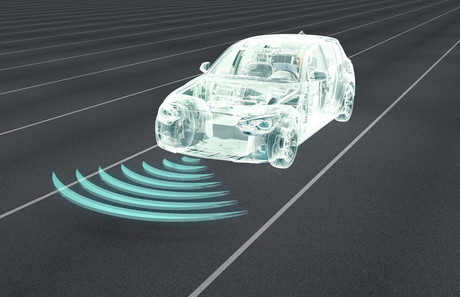Simulation and radar technology improves vehicle safety

The safety and reliability of vehicles could be improved with new technology developed by NI.
The vehicle radar test system (VRTS) can be used by engineers to test 76–81 GHz radar technology from the R&D lab through to high-volume production and from individual radar sensors to integrated advanced driver assistance systems (ADAS).
In addition, engineers can take advantage of the flexibility of the software to use the VRTS to simulate scenarios ranging from a pedestrian walking across the street to lane-change driving scenarios. VRTS software flexibility is a key benefit of the system, as engineers can easily adapt to rapidly evolving regulatory environments.
The VRTS combines mmWave front-end technology, a PXI vector signal transceiver (VST) and application-specific software. Unlike traditional automotive radar simulators that are only capable of obstacle generation for functional behavior test, the VRTS integrates a 76–81 GHz vector signal generator/analyser designed for dynamic obstacle generation and comprehensive RF characteristic measurements. Using a more comprehensive approach to radar test that includes both traditional and hardware-in-the-loop (HIL) test techniques, engineers can deliver more robust autonomous driving technology to comply with evolving regulatory requirements.
“We can use the VRTS to configure the industry’s most advanced ADAS test systems to improve the safety and reliability of vehicles,” said Michael Konrad, Konrad Technologies founder and CEO and co-founder of the ADAS Innovation in Test (IIT) Consortium.
“The advanced synchronisation capabilities of PXI combined with the ease of use of LabVIEW allows us to simulate even some of the most advanced sensor fusion environments combining GNSS, radar, cameras and even lidar.”
The VRTS scales from a base configuration that can emulate two obstacles to sophisticated configurations that can emulate four independent obstacles per PXI chassis. Key VRTS attributes include the ability to simulate Doppler effect velocity of up to 250 km/h, a minimum obstacle range of 4 m, object distance resolution down to 10 cm, support for multiple angles of arrival and variable radar cross sections. The VRTS includes both object simulation capabilities and the radar measurement suite.
Timber company fined $385K after conveyor crushing
In Western Australia, a timber company has been fined $385,000 after a worker's arm became...
Alarming commercial driver fatigue, distraction levels: report
A new report by a technology company has revealed some critical data relating to driver fatigue...
Gin distiller explosion injures eight, $50K fine
An explosion and fireball at a Rutherglen winery and gin distiller that injured workers and...










